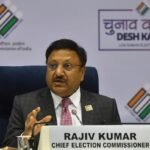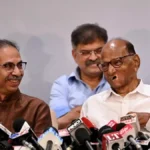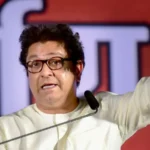In the Maharashtra State Election of 2024, the Shiv Sena—especially the Uddhav Balasaheb Thackeray (UBT) faction—faces a number of formidable obstacles. These difficulties are caused by political dynamics at large, electoral outcomes, and internal divisions. The following are the primary obstacles:
- Factionalism and Internal Divide
The Uddhav Balasaheb Thackeray (UBT) faction and the Eknath Shinde faction comprise the two primary factions within the Shiv Sena. Internal strife and a diminished base of traditional voters have resulted from this divide within the party. Following the split, the UBT faction, led by Uddhav Thackeray, is running in its first major election, which presents serious organizational and strategic difficulties. - Results of Elections
In contrast to its past performance, the UBT faction’s performance in the most recent Lok Sabha elections was lackluster. In contrast to the 18 seats the Shiv Sena, in its entirety, won in 2019, the faction only won nine of the 21 seats it ran for. This decrease poses a significant challenge for the next state elections since it shows a reduction in voter confidence. - Loss of Fortresses
Important bastions for the Shiv Sena, like Ratnagiri-Sindhudurg, Sambhaji Nagar, and Thane, have been lost by the UBT group. Their influence in key areas has decreased and their electoral prospects have become more difficult as a result of this territory loss. - Rivalry with the Shinde Group
In areas where the UBT group and the Eknath Shinde faction are directly in competition, the UBT faction has found it difficult to hold onto its lead. In direct confrontations with the UBT faction in the latest elections, the Shinde faction won seven out of thirteen seats, demonstrating a competitive disadvantage for Uddhav Thackeray’s group. - Changes in Voter Base and Demographics
It has been difficult for the UBT faction to hold onto its primary Marathi voter base. Votes from minority communities, who typically favor the NCP and Congress, were shifted to the UBT faction in certain locations. This change hasn’t, however, been enough to make up for the core Marathi voters that have partially switched to the Shinde faction. - Campaign Strategy and Leadership
In order to garner support, Uddhav Thackeray had to leave his comfort zone and run a protracted campaign throughout Maharashtra. The faction’s fewer seats, despite his best efforts, emphasizes how hard it is to keep the party united and mobilize people in the face of both internal and foreign forces. - Political Coalitions and Co-Sitting
Challenges have also arisen from the UBT faction’s collaboration with the Maha Vikas Aghadi (MVA), which comprises the Congress and the NCP (Sharad Pawar faction). Their electoral operations have become more complex due to seat-sharing talks and the requirement to coordinate campaign strategy with alliance allies. - Media Narratives and Public Perception
The UBT faction has also been impacted by how the public views the Shiv Sena’s division and the stories that the media has created around it. Following the split, the side has had to deal with bad press and doubts about its capacity to lead successfully.
In the Maharashtra State Election of 2024, the Shiv Sena (UBT) faction is confronted with a variety of obstacles, such as internal conflicts, problems with electoral performance, the loss of strongholds, competition from the Shinde faction, changes in the population, difficulties with leadership, alliance dynamics, and public opinion. All these elements combined make the election landscape challenging for Uddhav Thackeray and his group.








